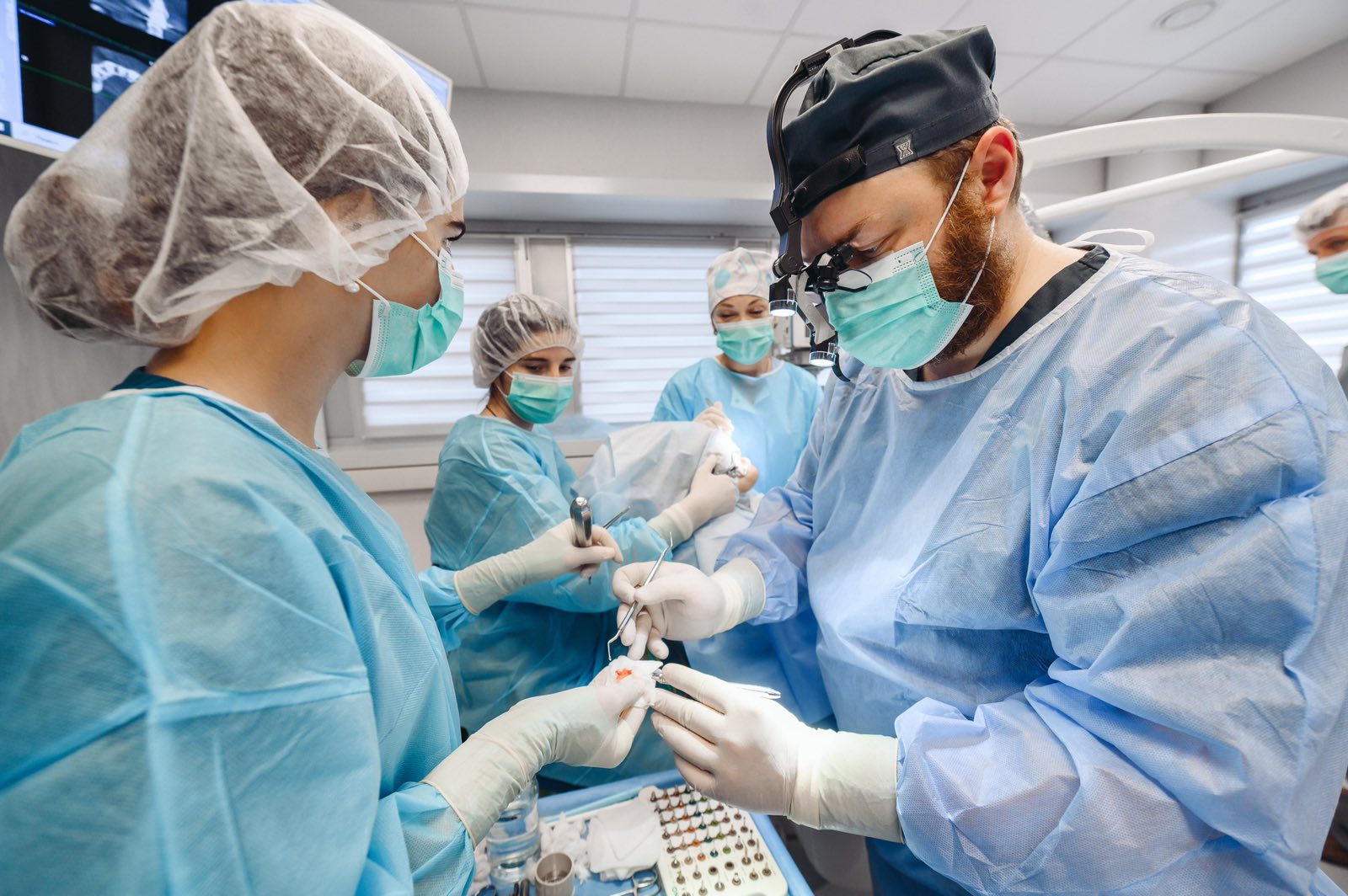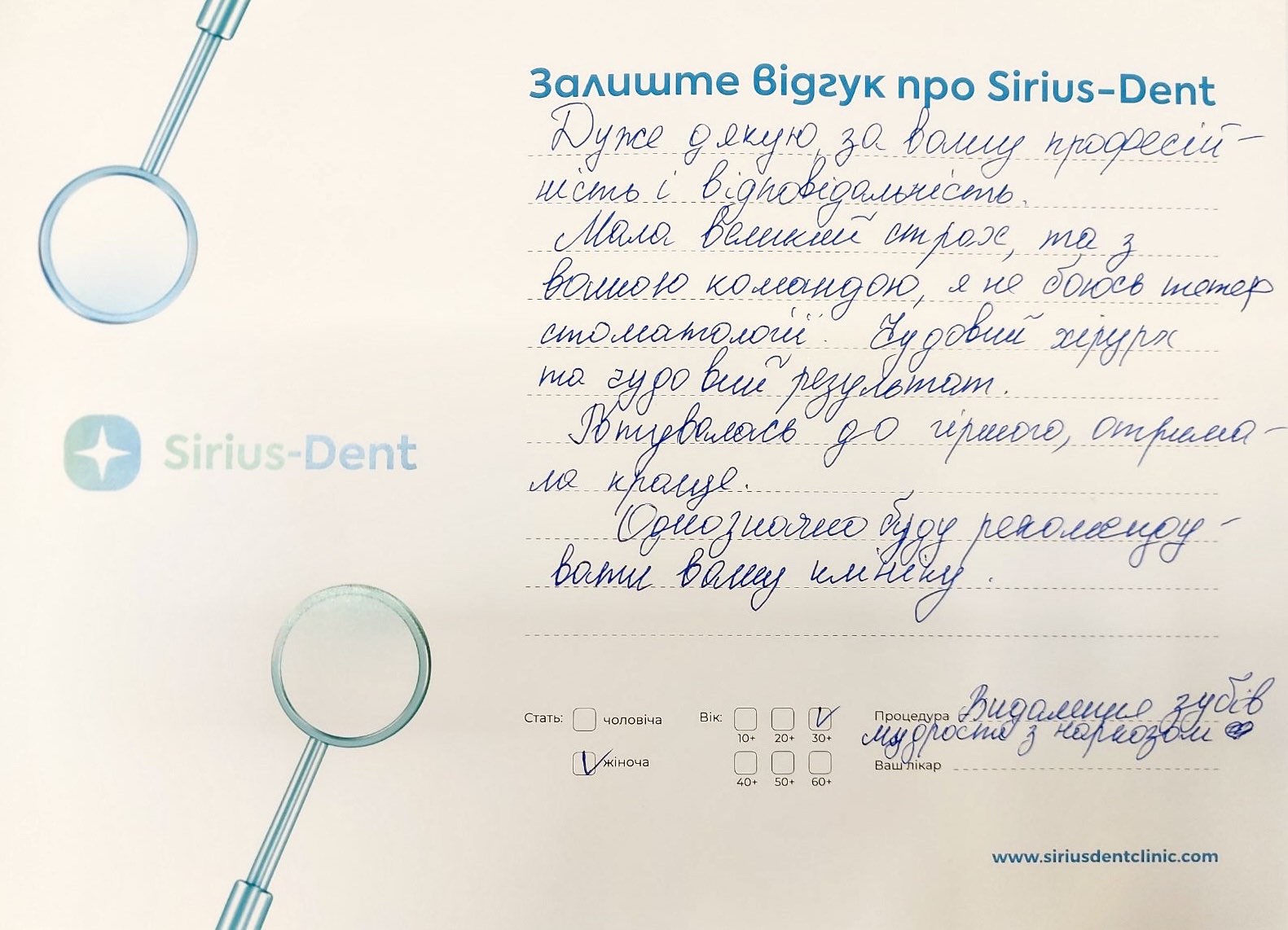Dentistry
Replantation of teeth
Replantation of teeth and their embryos is a classic technology, the description of which can be found in textbooks on dentistry from a century ago.

However, it never became widespread, because it is a really complex procedure that requires special skills and experience from the surgeon. Currently, even not all young doctors will undertake replantation, because there are more modern and simple methods of restoring a lost tooth, such as the same dental implant or installation of a removable prosthesis. But we at the Sirius-Dent medical center successfully perform such operations, and the transplanted teeth take root well.
Tooth replantation by an experienced surgeon
Call our administrator and make an appointment for a consultation by phone +38 (066) 125 86 31 or fill out the form on the website

what is worth knowing
What is tooth replantation?
Replantation is the transplantation of one’s own organ or tissue (in our case, a tooth or its embryo, if we are talking about a child) to another place. Actually, in dentistry and maxillofacial surgery, we replant not only teeth: the transplantation of bone blocks during osteoplasty, which is performed when there is a lack of bone tissue before implantation, is a replantation. In mucogingival surgery (restoration of the soft tissues of the gums), we also use the patient’s own donor area — the upper palate or maxillary tubercle, from where the connective tissue graft is transplanted under the lower lip in front of the front teeth or on the frontal area of the jaw. Even the replacement of a completely knocked out tooth or the plastic of torn facial tissues is also a replantation.
Reasons for tooth replantation
If we are talking about replantation of a tooth in an adult patient, we assume that if there is a healthy tooth eight suitable for transplantation, it makes no sense to simply throw it away. Unfortunately, healthy wisdom teeth in adulthood (or at least eight that last longer than six) are rare. A solution could be the preservation of healthy removed eights for a future transplant, but this is not always possible. But replantation is very helpful in the case of early removal of the six in a child or teenager. The sixth tooth is the key to occlusion, that is, it holds the height of the bite and the tooth row. And if it was removed during the period when the bite has not yet formed, then we can neither install an implant (because the child and, accordingly, his jaw is still growing), nor leave an empty space, because in a few years we will get a significant deterioration of the bite. In such a case, the optimal option is to transplant the embryo of a wisdom tooth in place of the sixth: if the tooth erupts and grows, the child will receive a normal bite and dentition, and the replanted tooth will serve him for most of his life. If the embryo does not cut through, it will still retain the position of the teeth and the necessary volume of the jaw bone for prosthetics in adulthood.

Indications and contraindications for tooth replantation
Several options for replantation are possible, but the most common is a wisdom tooth transplant in place of the sixth. The eighth teeth are not taken into account when determining the chewing efficiency coefficients, and their replantation will not adversely affect the position of all other teeth in the row. Replantation of wisdom teeth is indicated if two conditions are met:
- the eight is healthy, not affected by caries, periodontitis, pulpitis, etc.;
- the six must be completely absent, and enough time has passed since the removal. Or the bone is in such a state that it needs to be removed, but there is no inflammatory process in the bone. Such conditions correspond to trauma, chronic inflammatory process of the tooth, gradual destruction of the tooth with sealed canals and indications for removal.
Accordingly, a contraindication for replantation will be the presence of an acute inflammatory process of bone tissue near the sixth tooth. In addition, if the patient has autoimmune or oncological diseases, due to which dental implantation is contraindicated, he will have difficulties with replantation, so it is not advisable.
Types of tooth replantation
At the Sirius-Dent medical center, we also perform other types of replantation. In particular, the replantation of a knocked-out tooth, which is simpler than a figure-of-eight transplant, because we install the tooth exactly where it was before. It is advisable to consult a doctor immediately after receiving an injury, but if this is not possible, replantation can be carried out within a day (delayed replantation). All this time, the knocked-out tooth should be kept in a physical solution or unrestored (homemade) milk so that it does not dry out and dirt does not stick to it.
We also carry out replantation of supernumerary teeth in place of removed ones. For example, a person grows an extra premolar, and the teeth erupt in a triangle. Then such an overcomplete tooth can be removed and transplanted, and then the position of the other teeth can be aligned.

Stages of tooth replantation
Replantation of the eighth tooth in the place of the sixth is carried out under sedation anesthesia, because it is located in the depth of the jaw and the surgeon must ensure convenient access for all manipulations. Accordingly, before replantation, the patient undergoes standard preoperative preparation (computed tomography, anesthesiologist’s consultation, prescribed tests). Replantation includes the following stages:
- removal of the sixth tooth, if it was not done earlier;
- a figure-of-eight model with CT is printed on a 3D printer;
- the dentist-surgeon files the bed for the figure eight according to the parameters of the model;
- the dentist-therapist removes the nerve from the figure eight and fills the root canals;
- the eight is removed and installed in the prepared place.
An important condition for the implantation of a replanted tooth is its stability and immobility during the next three months, for which a dental splint is placed on it and the teeth nearby. Since the replanted tooth no longer has a periodontium, grafting takes place by the type of ankylosis: the root of the tooth grows directly with the jawbone.












